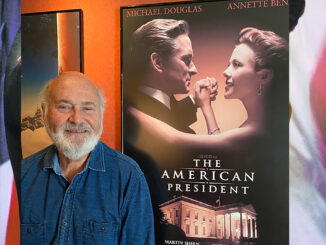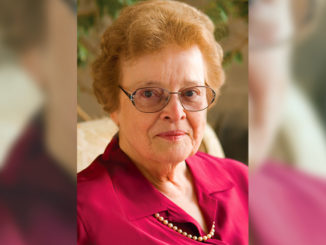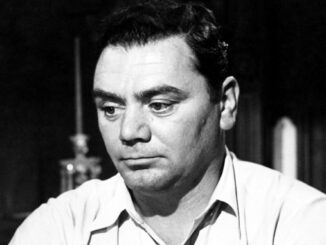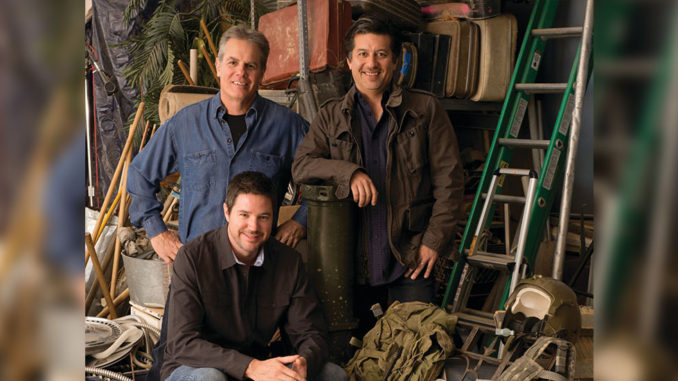
by Mel Lambert • portraits by Martin Cohen
To supervising sound editor Wylie Stateman, writer-director Peter Berg’s new action drama Lone Survivor is an “extremely powerful, intimate film, with a unique cinematic style.” The film tells the harrowing story of four American Navy SEALs who, in June 2005, were assigned to capture a prominent Taliban leader on the mountainous Afghanistan-Pakistan border. “The tension as the film’s SEAL team attempts to escape after a botched mission, while gradually losing communications with base and fighting for their lives, is very personal, intentionally real and very unpredictable,” continues Stateman.
The Universal Pictures release, which stars Mark Wahlberg as team leader Marcus Luttrell, will have a limited release December 27 before going into wide release January 10. The film is based on Luttrell’s bestselling book, Lone Survivor: The Eyewitness Account of Operation Redwing; the author was a sole survivor of the five-day reconnaissance mission into a Taliban stronghold that resulted in the largest loss of life in SEAL history.
Stateman recalls collaborating closely with lead sound effects designer Harry Cohen, MPSE, film editor Colby Parker, Jr. and re-recording mixers Andy Koyama and Beau Borders, “to develop a style guide that was unique to this film. For example, there were several gun battles and a serious rocky fall that contained no traditionally scored music. The absence of music allowed our sound effects and Foley to take the soundtrack’s exclusive and full dynamic range.
“Sound effects tell the story of the team’s isolation and perilous escape, while being pursued by a force of Taliban rebels,” Stateman continues. “Large set-piece moments are voiced purely with organic sound design. Editors carefully crafted radio chatter and gun-report echoes to accentuate the tight shots from wide-angle perspectives. And to help during his early picture editing phase, we supplied Colby with a number of sound design essentials and radio effects.”

Courtesy of Universal Pictures
“Working with Wylie and Harry was the most rewarding part of the editing process,” Parker reveals. “It was very collaborative. Before shooting started, I had many rap sessions with Wylie; those discussions really helped me from an aesthetic standpoint. Many times I would send a cut to Wylie and, when he presented his work, my cut became so much more visceral and violent.” Stateman would also suggest edits to complement the sound design, or comment to Parker, “Why did you cut out that scene? It was cool.” “So we’d put it back in,” the picture editor recalls. “You cannot say ‘No’ to Wylie.”
Stateman and his team, which was based at Todd Soundelux in Santa Monica, developed a complex vocabulary of radio sounds used in the film, including carefully crafted effects to mimic failing communications as the SEAL team gradually lost contact with home base and became increasingly isolated. “We developed new levels of futz to duplicate the digital, packetized sounds as radio communications failed,” the supervising sound editor recalls. “Each word — even syllable by syllable — was selected for unique processing, and distressed individually to serve the needs of the film. We would also repeat words and even flip them for added emphasis.”
While Cohen handled the weapons sounds, Dror Mohar mainly took care of the radio effects, but occasionally they’d swap roles or work collaboratively, according to Stateman. Other sound editors on Lone Survivor included supervising dialogue/ADR editor Renee Tondelli and first assistant Branden Spencer, “who pulled it all together,” Stateman stresses. Garry Hecker oversaw the Foley sessions.
Koyama, who is currently part of Formosa Group (see related story, page 46), handled dialogue and music for the film. “Director Peter Berg staged very visual battle scenes, which put the audience directly into the action; we responded with a very intimate soundtrack that reflected that vision,” Koyama says. “We have many perspective changes, as we see the SEAL team under fire and firing back at the rebels — it became extremely complex. The ambiances were already built into the effects supplied by Wylie and his team, to offer perspective effects for our pre-dubs.” The film was re-recorded on Stage 1 at Todd-AO Santa Monica, using an Avid System 5 Digital Production Console; Zack Howard served as mix technician.
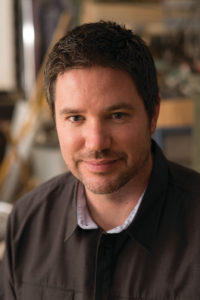
“The radio elements were very intricate,” Koyama explains. “Communications became more problematic for the SEALs as they moved further into the mountains, losing contact with base command, but remaining in touch with one another. We had a number of mic bumps, cloth rustles and breath sounds that we blended together to create a distinctive sound for each SEAL. We ended up with 32 channels of dialogue futz, including processed comms tracks, working toward virtual pre-dubs in Pro Tools X, using Audio Ease Speakerphone plug-ins; I counted 23 speakerphone inserts for just one scene!”
Visceral and Raw Feel for Soundtrack
According to Koyama, Berg had a very clear idea of the visceral and raw feel he wanted in the soundtrack. “He did not want to hear real voices,” the mixer reveals. “For the helicopter interior scenes, everything had to sound like it was coming from headphones and earpieces, as if the audience was there; the futz had to sound realistic but still be intelligible. As the comms channel deteriorated, we used Speakerphone with Crush [settings] to mimic a reduced bitrate and sampling frequency to degrade the sounds, but still retain that critical intelligibility — there is a very fine line between the two. For the remote side of the communications to Navy SEAL base, we also used the voices of real military personnel for a very precise, professional tone.” (Berg reportedly deployed for one month with a real SEAL platoon in Iraq near the Syrian border in early 2010.)
“For production dialogue, Peter likes rough edges, to keep the scene alive and not too polished,” Koyama continues. “The lavaliere mics added a clean, visceral, documentary-style to the soundtrack. We had a total of 96 dialogue tracks for final mix; the dialogue futz, my dialog English and indigenous group were pre-dubbed virtually carrying automated Pro Tools plug-ins settings.”
The musical score was provided by instrumental band Explosions in the Sky and composer Steve Jablonsky. “Supervising music editor Bryan Lawson and music editor Sam Zeines delivered 24- and 32-channel stems with duplicate elements,” Koyama says. “All in all, I had approximately 40 5.1-, 5.0- and three-channel stems for the final mix.”

“The film features a well-defined soundtrack,” Stateman maintains. “We used Native Instruments Kontakt Design samples to craft sounds for the gun battles [including Cinesamples’ Metallic Sound Designer], with every Colt M4 rifle used by the SEALs having its own unique accent, and a natural-sounding fingerprint design. We also recorded the real sound of weapons at ranges in New Mexico, Arizona and Utah, with both distant and close ambiences. Our plan was to create a very intimate soundtrack that puts you into the SEAL team, experiencing their world. To maintain the sense of intimacy, we decided to reduce the music because it often softens that effect, and can distract from the core idea that this is a film about a great military tragedy; there are no good guys and there are no bad guys.
“Modern firefights can be very confusing, with lots of radio activity between the SEALs as they became more isolated and realize that they’re outnumbered by at least 10 to one; they communicate via the radio and hand signals,” the supervising sound editor continues. “And for long falls down the mountainside, to accentuate the drama we used cut effects and very little music. For the Foley, we decided to refrain from being busy and cluttered, because Navy SEALs are stealthy, with no clattering or clanging as they move — despite carrying twice their body weight in gear! Above all, they needed to remain quiet and unobtrusive, which we reflected in the soundtrack, with the sound of cold winds and a breathless feel.”
“We developed a realistic world for the actors as they hike their way into the mountains and prepare for a potential gun fight,” recalls Borders, who mixed sound effects for the film. “Leading up to the battle, we detailed the mix with the smallest sounds, including leaf brushes on their faces and the sound of cloth on rocks when they were seated or going for cover — it needed to remain hyper-real to put the audience into the SEAL team’s perspective of danger and isolation. We wanted the audience to feel the tension in the quietness as we pulled back the music to reveal all these real-world sounds. When the first shot is fired, there is no dialogue between the SEALs, so we were able to return to that sense of tense quietness for a quick beat before all hell breaks loose.”

Close attention was also paid to the sound of the various helicopters used on the soundtrack for Lone Survivor. “The SEALs are dropped off from twin-rotor Boeing CH47 Chinooks, which have a distinct, characteristic sound,” Borders continues. “So we secured special permission for field recordist Charlie Campagna and Wylie to record take-offs and landings which, at the start of the film, were mixed in with the music to fill the room and establish our heroes as the dominant military force. We also cut back on percussive sounds from the score so that the helicopter sounds could cut through more clearly, with no conflicting tempos. Close collaboration with Bryan and Sam in the music department was essential in maintaining clarity throughout the entire mix.”
Weaponry, Explosions and Chaos
The guns and explosions created their own challenges, according to Borders. “In the battle sequences, the SEAL team is immediately overwhelmed by the Taliban,” he relates. “During early scenes, the SEALs had kept in formation and travelled together, remaining in touch with one another via brief radio conversations. The soundtrack remained clean, precise and location-specific. But later, as they became overwhelmed, the sound became more frantic and chaotic. When it was obvious that the SEALs were losing the battle, we started to break the rules and used close-sounding effects — even if they were a long way away — adding distortion and even panning sounds in the wrong direction to add further confusion and disorientation to the soundtrack.
“And as the SEALs were hiding amongst mountain rocks with the enemy continuously firing upon them, there were few bullet-on-body hits, but many body strikes from shrapnel and rock ricochets,” the mixer adds. “They were being absolutely bombarded with shrapnel from both guns and RPGs. It was a delicate mix between all the layers of sound effects, music and the key lines of dialogue that we needed to hear — with concern about which lines can be obliterated by debris, rock hits and other sounds as the SEALs regroup under the worst of circumstances. The music is sculpted within the dialogue and effects track to further develop a sense of disorientation. We didn’t want our battle scenes to just be full volume all of the time. We knew we couldn’t create chaos with loudness alone; it takes a meticulous combination of all our sonic ingredients carefully balanced against picture.”
Borders remembers preparing dozens of 5.1 pre-dubs, including “14 groups of various helicopter elements, ranging from high whines, rotor whooshes and low-, medium- and high-frequency components, plus sweeteners, and interior and exterior sounds. For guns, I divided up the sounds into eight pre-dubs for bad guys and six for good guys, plus an assortment of groups for bullet hits, ricochets, whiz-bys, explosions and all the other food groups of sounds. We made the sound effects stems extra wide just in case we needed additional elements later for a Dolby Atmos or 7.1 mix, or to accommodate other delivery formats. The film would make a wonderful Atmos mix, because the action and the visuals are so very immersive.”

Courtesy of Universal Pictures
Foley was its own special character in the film, according to Borders, particularly for the sequence where the SEALS are jumping of cliffs and sliding down rock faces, suffering multiple broken bones. “I had the most amazing palate of sounds to work with,” he says. “Foley artists Gary Hecker, Nerses Gezalyan and Gary Marullo really went all-out on this one and brought an amazing level of realism to the film.
“It was a great team effort, and one that met with the approval of various Navy SEALs and other military personnel to whom we played the 5.1-channel soundtrack,” he continues in conclusion. “I am extremely proud of my colleagues for all their hard work.”



